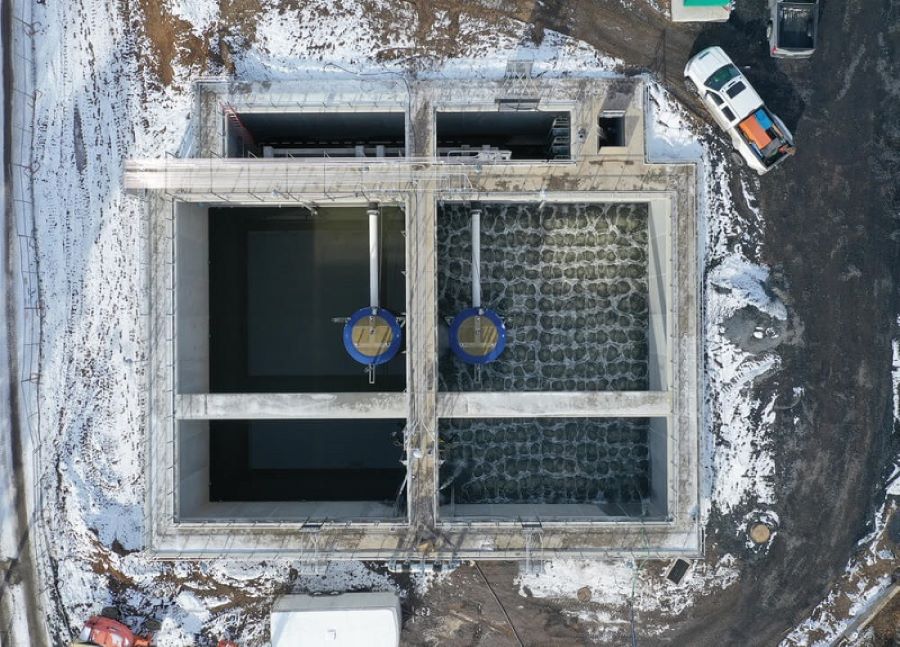In the context of increasing environmental pollution, choosing an effective and cost-saving wastewater treatment technology is an urgent requirement. In addition to traditional aerobic technologies, the ASBR (Anaerobic Sequencing Batch Reactor) is being applied by many factories, industrial zones, and production facilities thanks to its ability to treat wastewater with high organic concentrations while also generating renewable energy from biogas. With many outstanding advantages, ASBR has become one of the sustainable solutions in the wastewater treatment industry today.
The ASBR tank (Anaerobic Sequencing Batch Reactor) is a batch wastewater treatment technology based on the activity of anaerobic microorganisms. Unlike aerobic systems that require continuous oxygen supply, ASBR operates without dissolved oxygen, where anaerobic microorganisms decompose organic matter in wastewater into final products such as methane (CH₄) and carbon dioxide (CO₂). This technology is suitable for treating wastewater with high organic loads, such as wastewater from food processing, seafood, breweries, distilleries, etc., helping to reduce pollution while also utilizing biogas for energy production.
ASBR operates in batch cycles consisting of four main stages: filling, biological reaction, settling, and decanting. During the reaction stage, anaerobic microorganisms break down complex organic compounds into volatile fatty acids and then convert them into methane. This process occurs in completely anaerobic conditions, without the need for aeration, thereby saving energy. Thanks to the batch cycle mechanism, ASBR can effectively control hydraulic retention time, organic loading, and treatment cycles, ensuring high efficiency in reducing BOD, COD, while producing renewable energy from biogas.

What is the ASBR tank in wastewater treatment?
Level sensor: This is an important device in the ASBR tank, responsible for displaying water levels and providing data to the central control panel. When the water level exceeds the limit, the system automatically activates the valve to stop filling. Conversely, if the water level is too low, the sludge tank’s discharge valve also automatically closes to maintain balance.
Before entering the ASBR tank, wastewater is pretreated through mechanical works such as bar screens, grit chambers, or grease traps. This process removes solid waste, suspended particles, and large materials, reducing the load on subsequent biological stages. It is an essential step to ensure stable operation and prevent clogging.
Inside the ASBR tank, anaerobic microorganisms decompose organic compounds in cycles: filling, biological reaction, settling, and decanting. Complex organics are converted into intermediate compounds and finally into methane (CH₄) and carbon dioxide (CO₂). This stage not only significantly reduces BOD and COD but also generates reusable biogas energy.
After passing through the ASBR tank, wastewater is directed to the disinfection unit. Here, chemicals such as chlorine, ozone, or strong oxidants are added to eliminate bacteria, viruses, and pathogens. This ensures the final effluent meets environmental standards before discharge or reuse.

Current wastewater treatment process using ASBR tank
The ASBR tank not only provides high wastewater treatment efficiency but also contributes to energy savings and environmental protection by utilizing biogas. This technology is suitable for various types of wastewater, especially in industries with high organic loads. In the future, along with the development of green solutions, ASBR is expected to be more widely applied, becoming an optimal choice for modern wastewater treatment systems.